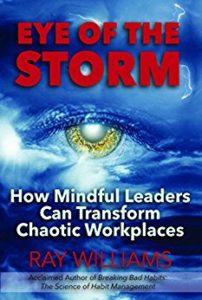In 2014 I wrote an article the the Financial Post on “Why Performance Reviews Don’t Improve Performance.” My perspective was based upon recent research and two decades of experience as an Executive Coach. I said in the article: “The reality is that the traditional performance appraisal as practiced in the majority of organizations today is fundamentally flawed and incongruent with our values-based, vision-driven and collaborative work environments.”
Performance reviews have been around for ages, apparently as far back as third-century China, but were popularized during the Industrial Revolution. Certainly by the l980’s performance appraisals in the form of GE’s CEO Jack Welsh’s “rank-and-yank” system were widely used in organizations.

Research by psychologists at Kansas State University, Eastern Kentucky University and Texas A&M University examined how people respond to negative feedback they receive in performance reviews. Conventional wisdom is that people who are really motivated to improve their performance would respond well to getting critical feedback in a performance review. The research demonstrated this wisdom is wrong. Those employees who have a desire to learn and grow—presumably the best employees—were significantly bothered by the negative feedback they received. One of the authors of the study argues that if negative feedback has the potential to discourage even the best performers, then managers need to be aware that what was meant as praise doesn’t get misconstrued as criticism.
Now a new report, by David Rock who is cofounder of the Neuroleadership Institute, a consultant and author of Your Brain at Work and Beth Jones, a senior consultant with NeuroLeadership Institute and heads up its performance management practice, published in the Harvard Business Review, provides support for my perspective. Rock and Jones describe how companies such as Juniper and Adobe stopped giving people a one-to-five rating or evaluating employees on a “performance curve,” also known as the “forced ranking” approach. The ranking system has been best exemplified—critically—in a New York Times expose of the toxic work environment in Amazon.
By early 2015, around 30 large companies, Rock and Jones report, representing over 1.5 million employees, have dropped traditional performance reviews. No longer defining performance by a single number, these companies were emphasizing ongoing, quality conversations between managers and their teams. “Yet in mid-2015, the trend started to accelerate. Consulting firms Deloitte and Accenture, global health services client Cigna, and even GE—the company who popularized the idea of forcing people into a performance curve—all announced changes to their performance management systems. By September 2015, 51 large firms were moving to a no-ratings systems. According to research firm Bersin by Deloitte, around 70% of companies are now reconsidering their performance management strategy,” Rock and Jones report.
The authors propose there are several cogent reasons why companies are moving away from ranking or traditional performance review systems, among which are:
- The changing nature of work;
- The need for better collaboration;
- The need to attract and keep talent;
- The need to develop people faster.
Rock and Jones conclude “Companies who have replaced ratings tend to be anxious about it beforehand and enthusiastic about it afterward. Their employees are happier, which encourages more engagement and better performance.”
A 1998 study by Development Dimensions Incorporated, found that employers themselves expressed overwhelming dissatisfaction with performance reviews. The consulting firm, People IQ, in a 2005 national survey, found that 87 percent of employees and managers felt performance reviews were neither useful nor effective. In an article published inThe Psychological Bulletin, psychologists A. Kluger and A. Denisi report completion of a meta-analysis of 607 studies of performance evaluations and concluded that at least 30 percent of the performance reviews ended up in decreased employee performance.
Tom Coens and Mary Jenkins, in their book, Abolishing Performance Appraisals: Why They Backfire and What To Do Instead, detail studies that clearly show performance appraisals do not work and outline what could replace them. Garold Markle, in his book, Catalytic Coaching: The End of The Performance Review, argues that performance reviews have reached the end of their utility and should be replaced with a manager-employee coaching system.
Charles Jacobs, author of Management Rewired: Why Feedback Doesn’t Work and Other Supervisory Lessons from Brain Science, says that the brain is wired to resist what is commonly termed as constructive feedback, but is usually negative criticism. Brain science has shown that when people encounter information that is in conflict with their self-image their tendency is to change the information, rather than changing themselves. So when managers give critical performance appraisal feedback to employees, their brains’ defense mechanisms are activated, and the motivation to change is improbable.
Samuel Culbert, a professor at the UCLA Anderson School of Management, and author of Get Rid of Performance Review: How Companies Can Stop Intimidating, Start Managing-and Focus on What Really Matters, argues that employee performance reviews are “destructive and fraudulent.” He argues “it’s time to finally put the performance review out of its misery,” adding, “this corporate sham is one of the most insidious, most damaging and yet most ubiquitous of corporate activities.” Culbert argues that the performance reviews “instill feelings of being dominated. They send employees the message that the boss’ opinion of their performance is the key ingredient of pay, assignment, and career progress.” He contends that the use of performance reviews is about “power and subordination, making condor all but impossible,” and causing employee defensiveness and stress. Culbert goes on to argue that the practice is more about intellectual laziness and ego-building for managers, and it avoids having to tackle the hard work of changing organizational processes. What should replace the performance review? Culbert argues that something called a “performance preview,” a process that holds the manager and members of the manager’s team equally responsible for results.

Literature abounds with systems and strategies for giving constructive criticism, and consultants have made lucrative livings implementing such systems in organizations, despite how flawed they are. Perhaps the silliest component of these systems is to suggest to the person giving the constructive feedback to “sandwich it” between positive statements, as if the person receiving the feedback will focus on the positive part of the sandwich, and not the negative. Again, this ignores the brain’s programmed preference to respond to negative information.
Rachel Emma Silverman and Leslie Kwoh, in two articles in The Wall Street Journal, cite evidence from the Corporate Executive Board that some companies are now abandoning formal performance reviews and replacing them with “performance previews,” in which the boss or manager engages in a dialogue with an employee about how a specific task or project will be completed before action is taken. This places onus not only on the employee to specify the how and what action will be taken, but also places onus on the boss to discuss what supportive actions are necessary. This creates a two-sided, reciprocally accountable performance system. The boss’s job then, is to guide, coach, tutor, and assist the employee rather than judge, evaluate and find fault.
Social media can also be used effectively to provide feedback in an informal and developmental way. Some companies are now using online technology to regularly collect “crowdsource” feedback. This system allows any employee to give immediate and real-time feedback to any other employee or boss while work is progressing.
Erick Mosley, writing in the Harvard Business Review Blog Network, argues “a group of independently deciding individuals is more likely to make better decisions and more accurate observations than those of an individual. Crowdsourcing, by leveraging social recognition data, is a better way for managers to collect, evaluate and share information on employee performance.”
Unlike 360-degree performance evaluations, which are end-point or annual processes, crowdsourcing is ongoing and real-time feedback. Also, rather than constructive crowdsourcing evaluations that duplicate performance evaluations that look for faults or critical feedback, a crowdsourcing system can be used as a motivational tool, by providing positive feedback. “When the crowdsourcing conept is applied in this way,” Mosley says, “co-workers and peers can identify and reward desired behaviors and cultural attributes through unsolicited recognition, as they happen…This stream of recognition, which often appears in internal social newsfeeds, provides timely, measurable insights into your talent top influencers and performers.”
The reality is that constructive criticism is an oxymoron. All criticism is inherently destructive and negative, however we may attempt to window dress it, or “sandwich it” between positive statements. Anything constructive is associated with growth, which requires a person to be open, not in a defensive state of mind. When put together, these two ideas constitute an oxymoron.

To be in an open, receiving state of mind, the feedback must be positive, or at least guide the recipient to self-awareness and self-discovery. Leaders in organizations now have an opportunity to abandon a system that is not only dysfunctional but doesn’t recognize the latest in neuroscience research and take advantage of new social media technology.
Clearly, the annual performance review was designed for a work environment where control of individual employee performance was a key function. In today’s collaborative environment, that perspective no longer makes sense. Some key questions that need to be answered are: Why are we perpetuating a system that research (including recent brain research) shows is not only ineffective, but counterproductive; and what are better processes to replace the performance review?
Copyright: Neither this article or a portion thereof may be reproduced in any print or media format without the express permission of the author.
Read my latest book: Eye of the Storm: How Mindful Leaders Can Transform Chaotic Workplaces, available in paperback and Kindle on Amazon and Barnes & Noble in the U.S., Canada, Europe and Australia and Asia.



